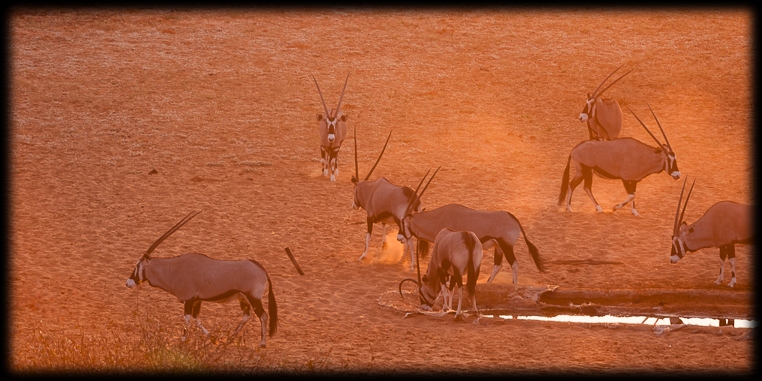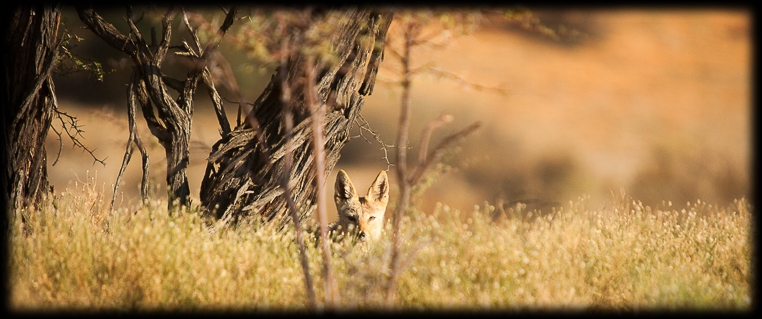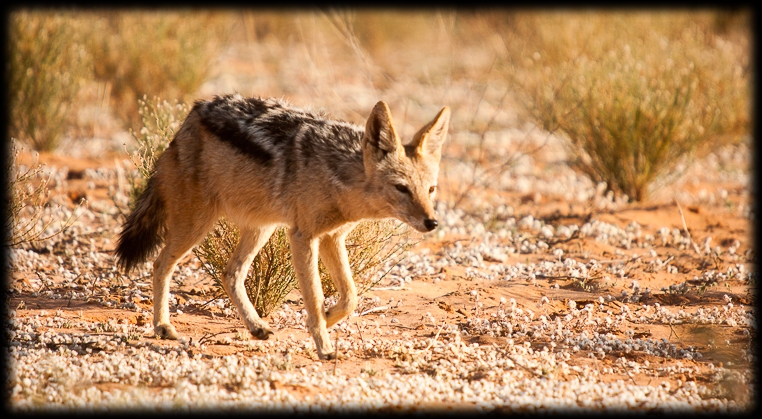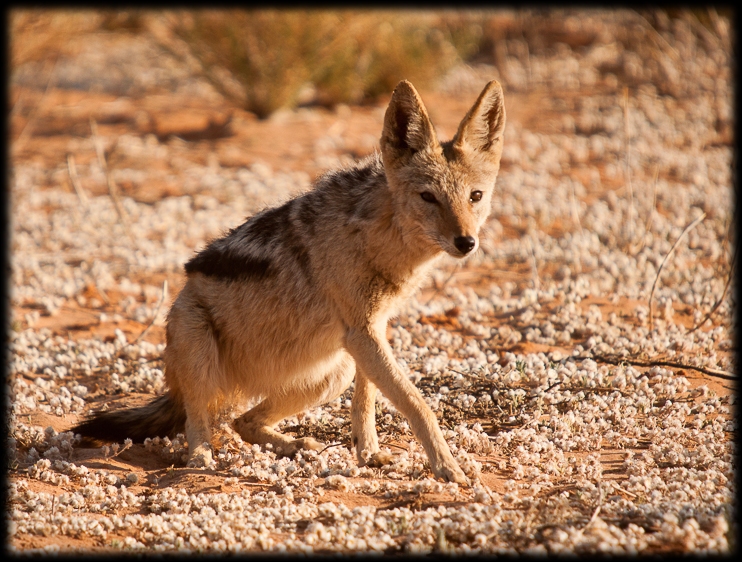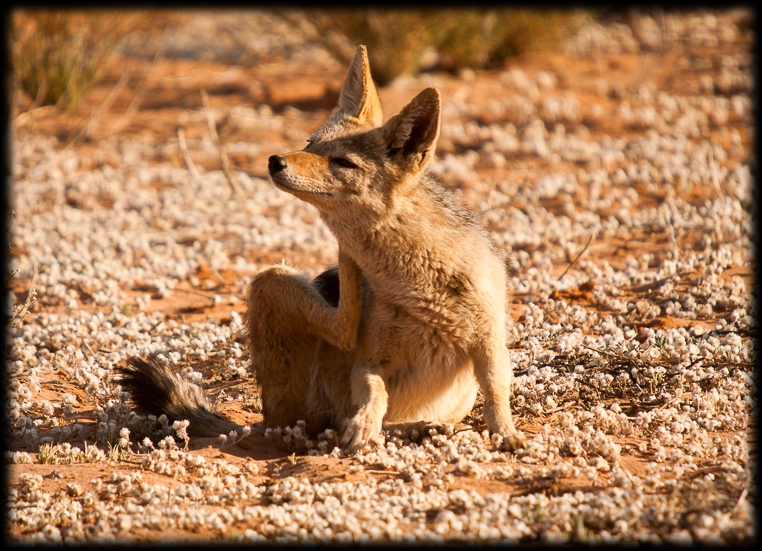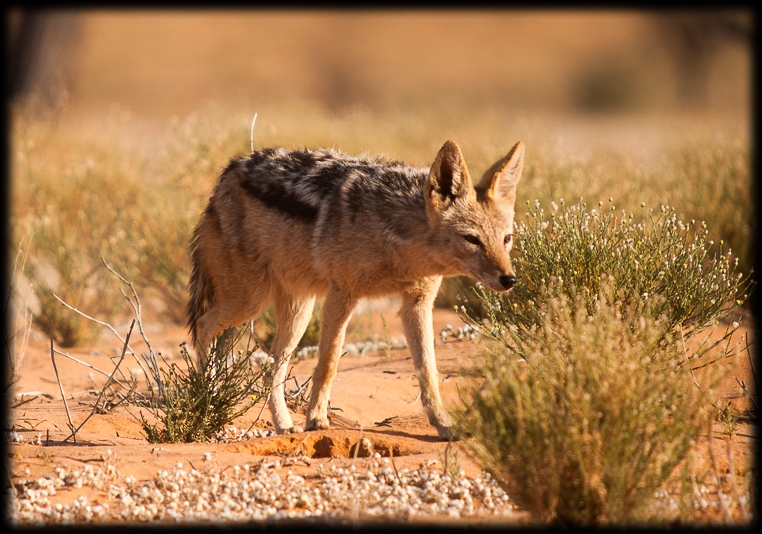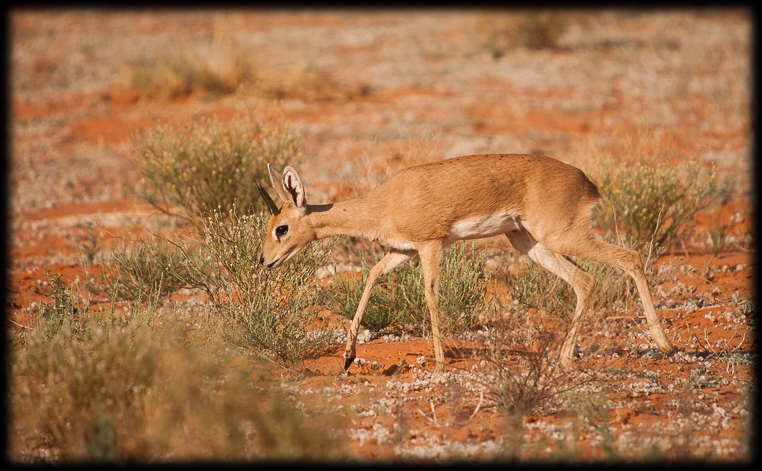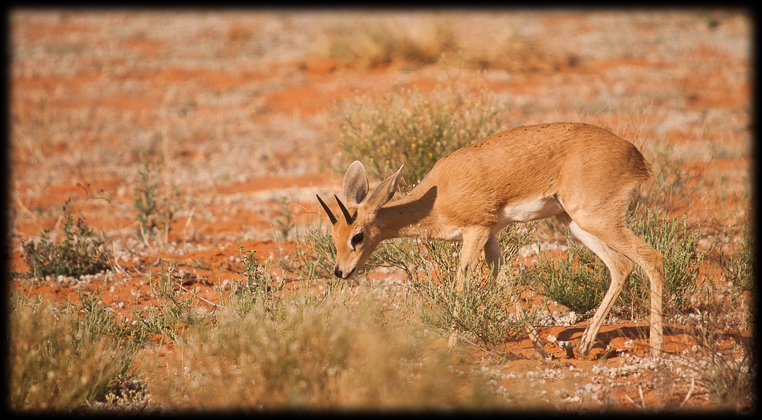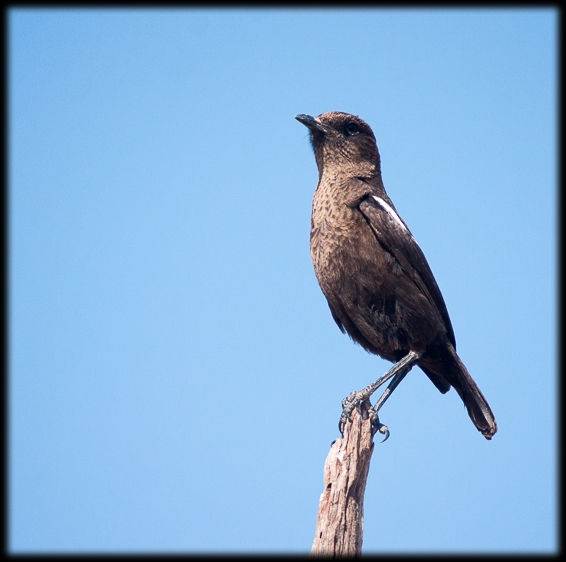As we were the only ones in camp we took a nice wander around as the animals at the waterhole were non-existent due to the strong wind. SO put the 10-20mm lenses on and we got the following shoots of the camp.
Looking South from observation tower:
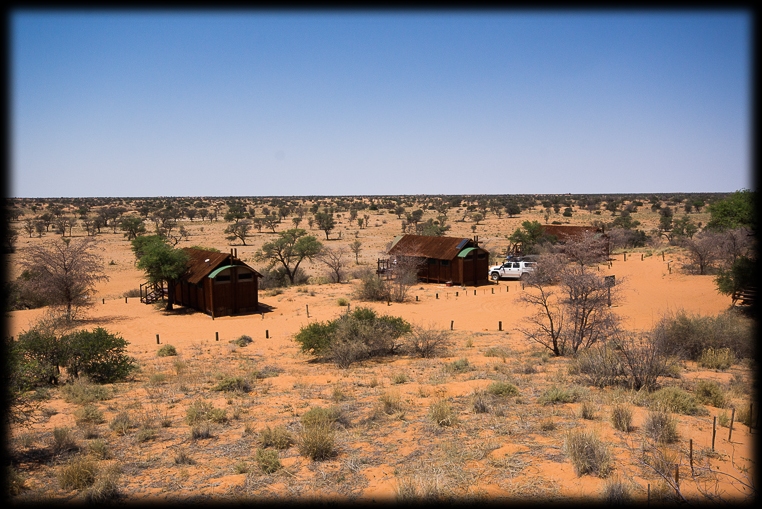

Looking North from observation tower:

As the sun started to set in the late afternoon the light was great and the wind started to dissipate bringing springbok and gemsbok to the waterhole and yes the mice came out to play.
Gemsbok
Like other animals found in desert regions the Gemsbok is efficient at preventing water loss from their bodies. They do not need surface water for survival, as they obtain enough moisture through the vegetation they eat. Gemsbok urine is very concentrated and faecal pellets very dry. They are able to increase their body temperature in order to delay evaporative cooling through perspiration. At night when the ambient temperature drops, the stored heat in their body escapes and their body temperature drops to a normal state.
Gemsbok have an intricate network of blood vessels, situated in the nose which cool down the blood supplied to the brain, thus protecting the gemsbok from deadly temperatures. They also reduce heat absorption by keeping their cylindrical bodies angled away from the sun.
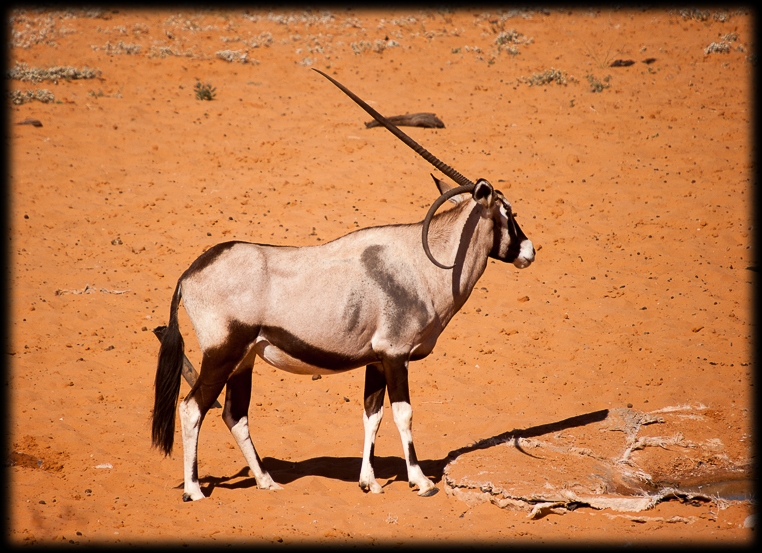
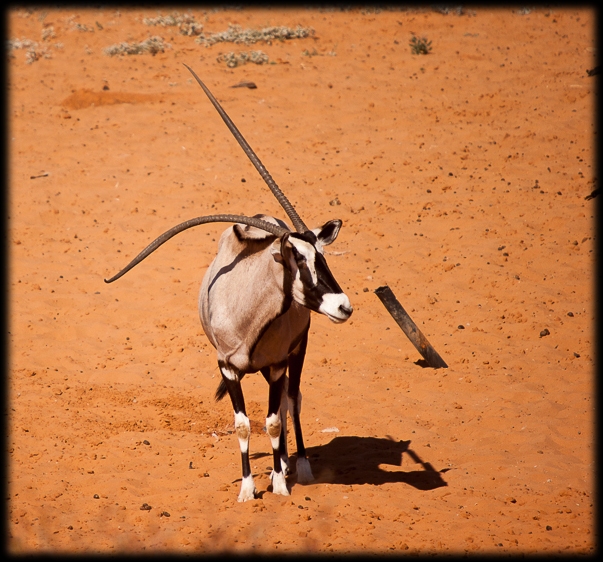
Striped mouse
Communal nesting and paternal care
Groups typically consisted of one breeding male and up to four breeding females. The male was highly sociable, showing as much social interactions with juveniles as females did. They even retrieved pups presented in front of their nest into their nest. Videotaping inside natural nests indicated that the males were sleeping with the rest of the group, and that they showed parental care in the nest. Thus, our observations of paternal care in captivity were no laboratory artefacts, also occurs in the field.
A group has 2-4 breeding females. These females originate from the same group, which means they are closely related such as sisters or half-sisters, while the breeding male originates from another group. All or most adult females of a group give birth and are raised together. Sometimes a female leaves the group nest to give birth elsewhere and only returns with the pups when those are around 10 days old. The offspring remains in their natal group even after reaching adulthood. This is the case both for males as well as for females. Interestingly, these offspring normally do not start to reproduce themselves, even when they are sexually mature and the breeding season is not yet over. Both juvenile and adult offspring help in nest construction, territory defence and warming younger pups in the nest. This why they are called helpers at the nest.

It was now late afternoon therefore it was sun downer time in a prefect venue. The lions started roaring just as the darkness commenced and continued for a long time but going away from camp. The barking gecko’s provided the sound track again for dinner. Tonight it was assorted cold meat and salad with some fresh bread. Here is my attempt to show you what the waterhole looks like with the light on:
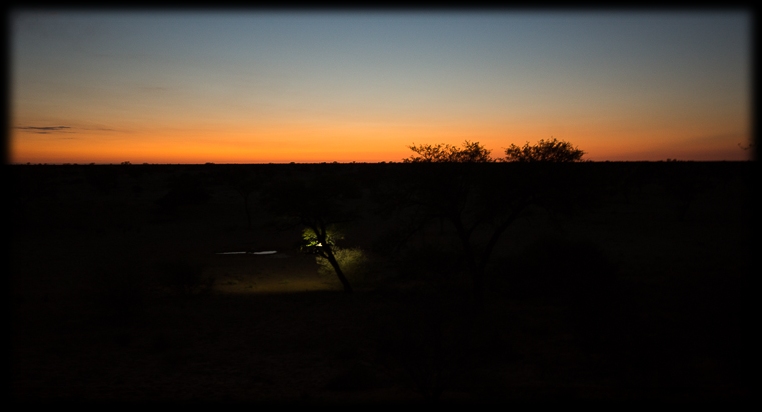
After spending a good few hours watching the night time activity at the waterhole we went inside to shower and prepare for bed. We eventually got into bed just after 11pm.
It had been a very nice relaxed day which we were happy about as we knew that from tomorrow we would be on game rich roads for the remainder of the trip.




